Why are the legs getting weaker and weaker and we can't walk more and more after almost a year of having a cerebral infarction?
Thanks for the invitation! There are many reasons why a patient with a cerebral infarction almost a year old is getting softer and softer in his legs, and walking is becoming less and less feasible, so screen slowly against these points below.
The first point is whether the brain infarction is further aggravated or whether the brain infarction is recurrent, because once the brain infarction occurs for the first time, then in the later stage, it is possible to have the second, the third, or even more serious frequent attacks. Therefore, it has been one year, it is very important to check whether the patient has gone for a review, whether he/she has taken the medication regularly, and whether he/she has adjusted the medication according to the results of the review. There are many times when patients only go to the hospital for the first time, and then they keep taking the medication prescribed for the first time, sometimes it works, sometimes it doesn't work, and when it doesn't work, then they will have frequent seizures in the later stages, and the second and third times, or even worse.
So the recurrence of the brain attack this is the first thing to consider, whether you have gone to the hospital to be checked again, whether you have actually gone to change the medication involved, whether you have done regular oral medication, these are all points to ask yourself.
The second point is, whether it is really effective treatment, because at present for patients with cerebral infarction, there are many times people's thinking is still stuck in the only drug treatment, not able to carry out surgical treatment, especially in some relatively small hospitals. Local and municipal hospitals or rural hospitals, for the treatment of cerebral infarction, just a simple bottle, infusion, go home to eat oral medication this state. Can this be cured? Later can not offend?
At present, the treatment of cerebral infarction is a relatively systematic process. It is not only the previous, a bottle of infusion, go home to eat oral medication so simple, more involved in surgical treatment, more involved in the later rehabilitation project exercise, etc., which is a very systematic project, a person has a brain infarction is not difficult to recover, but it is difficult to all the brain infarction of the whole people are cured. So this is a concept of the problem, there are a lot of people will go to worry will go to fear that I did some other treatment, is not more harmful to me, also understand, but the technology is constantly progressing, are constantly thinking about how to better. So as long as there is a cerebral infarction, must be good to check their own blood vessels, is not really a problem, if there is really a problem, internal medicine can not completely solve the rehabilitation function, exercise can not be completely solved, it is recommended to carry out surgical treatment.
Currently there are many surgical treatments for vascular disease, such as stent implantation, which includes stents for all aspects of the intracranial, as well as carotid endarterectomy, and superficial temporal artery, middle cerebral artery vascular anastomosis, and a series of anastomotic surgeries. So different patients have different disease states, and different disease states have different treatments, so this concept must be consistent throughout.
The third point, is not after a formal rehabilitation, because there are places where the concept of rehabilitation is just so simple as lifting up the legs and the hands, he simply does not have the means to measure the person in the end how to lift up the hands, how to lift up the feet, and sometimes at the beginning of the principle of its exercise is wrong, the exercise method is wrong, you even if you train for 1 year, train for 10 years, there is no special effect. So this is very important, are you really going through a formal rehabilitation training?
So although the disease of cerebral infarction is very common, and some people are used to it, and some of them just think it's fate, that is, a state of hemiplegia, but you don't have to check the blood vessels, and you don't have to check the factors of the root nature, so you just resign yourself to fate?
It is true that the level of medical technology is not very perfect yet, but all are working hard and going into better treatments, so there is no reason to reject any of the advanced ideas, advanced treatments, advanced surgeries.
Blessings of good health to all of you!
Feel free to like, comment, retweet, and follow me to bring you to the real world of neurosurgery (brain surgery).
Why are my legs getting weaker 1 year after a brain attack?
In the words of our leader: If the foundation is not strong, the ground will shake! In fact, there are many other reasons, with hemiplegia after the feeling of abnormalities may also be related, there may be your own feeling of deviation, may not be weak legs at all, but some abnormal gait caused by simple muscle weakness, or gluteus maximus muscle weakness gait, or quadriceps muscle weakness gait and so on, all of these can lead to hemiplegia patients with weak legs walking bad situation, that next I share for you! Other factors.
Most people with post cerebral infarction hemiplegia who have this problem are likely to have a problem with the way they exercise, but of course since we don't know what's going on with this patient, there could be a lot of other factors as well. So let's share today with this question in mind, what exactly is the cause of increasing weakness in the legs due to?
We all know that stroke is characterized by a high mortality rate and a high disability rate, and now the World Health Organization (WHO) has proposed a third health indicator, which is what we often call function. Now we are mainly talking about the problem of functional impairment, most of the hemiplegic patients after cerebral infarction will have different mild or severe physical dysfunction, or speech dysfunction, or cognitive dysfunction and so on.
Then like a cerebral infarction 1 year after hemiplegic patients feel more and more soft legs this situation may be caused by the following reasons, you may want to spend some time to look at the health knowledge, how can it be considered a harvest it.

Rehabilitation started at.
Then why are the legs weak, the possible factors are actually many, then this problem should be analyzed from various aspects, you say the legs are weak, people do not understand what exactly is your situation, surely you can not arbitrarily say exactly because of what.
Then the first point depends on whether the patient has been rehabilitated after the cerebral infarction? How long has he or she been rehabilitated? If not, have they been practicing on their own, and are they practicing the right way? Has the patient been doing muscle strength training? Whether the patient has been taking medication regularly, or whether the patient has any other diseases of his own, these are the questions we need to consider.
Medicine is rigorous and you can't just come and fool around with it, so I'll try to be as thorough as possible with you.
I've been talking to people about this for a long time with early rehabilitation for stroke, and if the early rehabilitation is done right, then a lot of the problems in the later stages can be circumvented!
I've shared with you before in my videos what kind of movements should be performed in early rehab, mid rehab and late rehab. So what are all the rehabs that start early?
For example, joint mobility exercises and correct positioning of the limbs in the bed are important, while correct muscle strength training as well as active and passive exercises need to be performed. Medication should be given in the middle stage of rehabilitation, and early exercise should include encouraging the patient to restart communication with the outside world.
Then if the patient in the early rehabilitation did not do sufficient reasonable exercise, may appear in the late legs the more soft the problem of practice, simply put, the foundation is not good, how can the building built on top of it will be stable? The basic strength training is not done, the appropriate relaxation is not done just practice walking walking, the recovery of help is very slow, there may be counterproductive effects, so this point we must pay more attention to it!
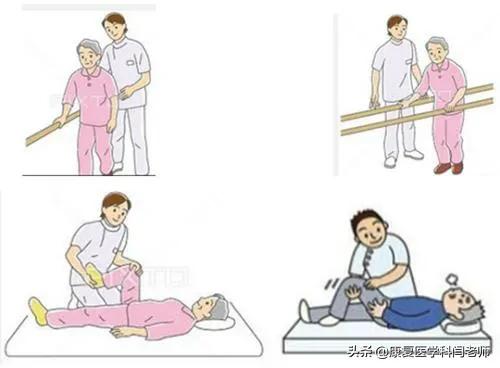
Is there a recurrence or exacerbation of cerebral infarction?
Does the hemiplegic patient take regular medication during home rehabilitation exercises? Do they go to the hospital for regular review?
We all know that the probability of recurrence of cerebral infarction is very high, that is to say, hemiplegic patients who have had cerebral infarction are 4~5 times more likely to have a recurrence of cerebral infarction than normal people. Therefore, regular checkups and regular medication have become the most important thing for patients to recover at home.
You need to ask yourself these questions: Are you taking your medications regularly, including aspirin, atorvastatin, etc., or what are the post-medication reactions, and what are the results of your follow-up, and how is the location of the infarct recovering? These are all questions to consider.

Scheduling of plyometrics training as well as assessment:
Muscle weakness is one of the most common sequelae in patients with hemiplegia after cerebral infarction, so have you assessed your muscle strength status to what grade.
Patients who have recovered in rehabilitation hospitals know that rehabilitation begins and ends with assessment. The meaning of this sentence is that we should constantly conduct an assessment of our own limb function, timely detection of problems, only after a fine and accurate assessment can we know exactly where the problem lies?
We have 6 levels of muscle strength: 0/1/2/3/4/5. You can make a self-assessment according to the data I provided. If the muscle strength is not up to the requirement of walking, then we need to resist gravity when walking, so naturally the legs will feel soft when walking, and it will only get softer and softer!
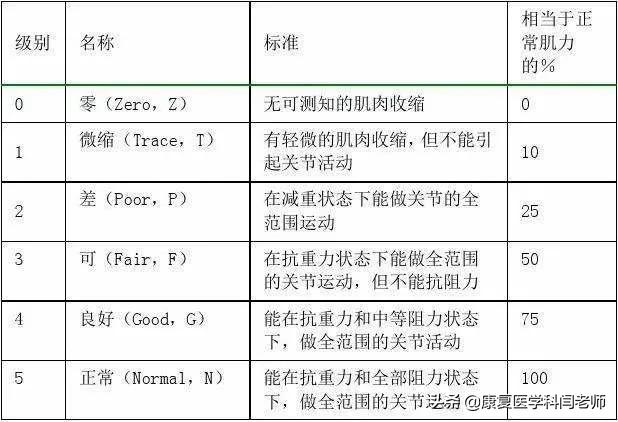
Muscle strength classification in the process of rehabilitation exercise for our patients in the process of their own rehabilitation assessment is an essential part of the process, and to be throughout the beginning and end of the rehabilitation treatment, so I recommend that you can first self-assessment of the assessment, or to find a professional rehabilitation therapist assessment, not their own rehabilitation a few days instead of a rehabilitation therapist, we have to go through the university for four years of study, and then internships, rotating departments, and then further training, and then work, how much to learn during this period, so you must also learn more. We have to go through 4 years of study in university, then internship, rotating department, then further study, then work, how much we have to learn during this period, so you must learn more by yourself too, and remember not to take things for granted.
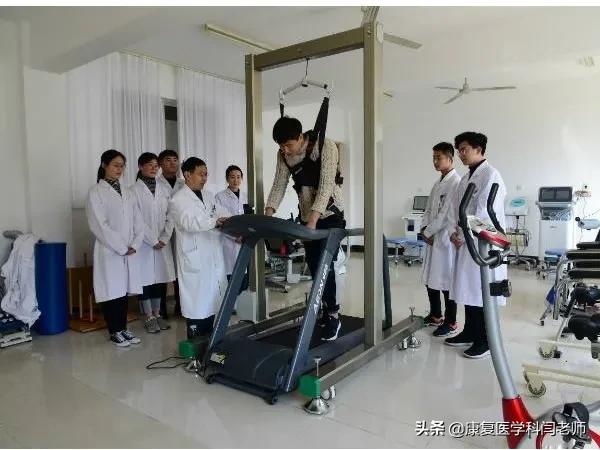
There is a direct relationship between changes in lower limb muscle strength and walking speed in hemiplegic patients after cerebral infarction, but for a long time, neuroprotective techniques often emphasize spasticity control and neglect the underlying muscle weakness, which also neglects the exercise of muscle strength, and recent studies have confirmed that muscle strengthening training has a positive effect on the recovery of motor function in stroke patients.
Recommendation: For patients with poor muscle strength, the following rehabilitation training methods are given for the corresponding muscles during the rehabilitation process:
Appropriate progressive resistance training for plyometric strengthening.
Myoelectric biofeedback therapy combined with conventional rehabilitation.
Functional electrical stimulation therapy applied to lower extremity rehabilitation exercises.

Home recovery is only a walk in the park.
Most people with hemiplegia who are rehabilitating at home practice walking at best, with no assessment and no rehabilitation program.
Prolonged walking induces a joint limb response, which leads to severe compensations of the trunk muscles, core muscles, and a host of other muscles, which in the long run leads to a number of abnormal gait patterns.
Most common abnormal gait associated with walking/...
Examples include quadriceps weakness gait, abnormal gait due to sensory deficits, abnormal coordination, weakness due to muscle spasms, gluteus maximus weakness gait (hip-extension weakness gait), gluteus medius weakness gait (commonly known as the duck step), quadriceps weakness gait, knee hyperextension gait, foot drop gait, circle gait, pain-reducing gait, and more.
Our home rehabilitation can't just be a walk in the park, we also need to be sure to find out what our main problem is? Which kind of abnormal gait it is, and develop a corresponding rehabilitation treatment plan for a certain kind of abnormal gait, which is the most important.
The fact that practicing walking all the time only adds to the burden on our bodies and does not alleviate our existing dysfunction is the biggest mistake in the rehabilitation process.
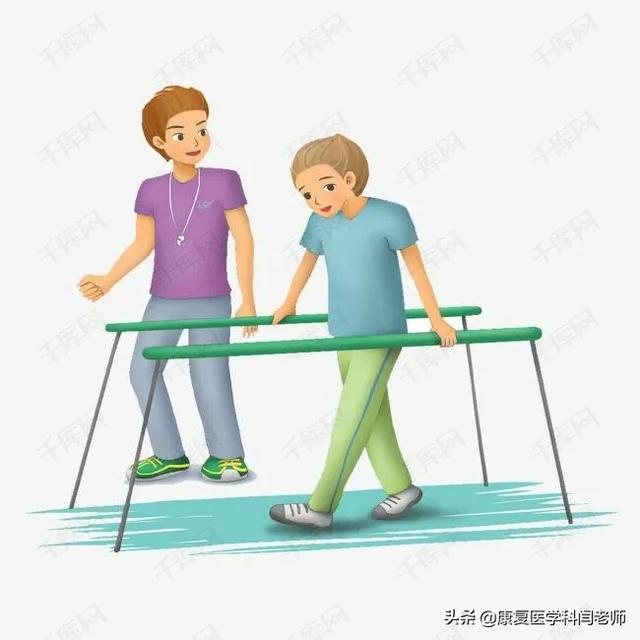
A few other reasons follow.
Excessive training volume.
If you arrange too many training programs for yourself every day, the amount of training is too large. It is also a direct result of not being able to complete the next treatment plan and schedule, which indirectly leads to the body not being able to withstand it. This may also result in lower limb weakness and increasingly bad walking.
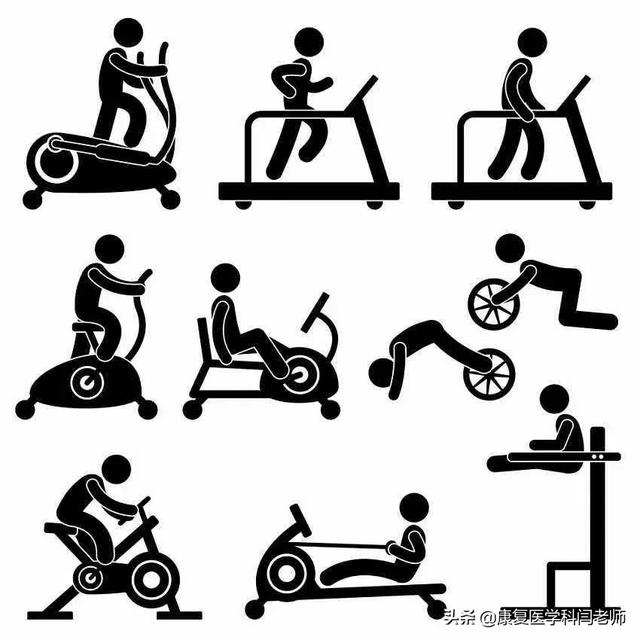
Lateral fatigue.
Practicing a lot of strength of the affected limb for a long time will indirectly lead to severe fatigue of our healthy limb, so we must follow the principle of rehabilitation exercise.
Tailored to the individual, active participation, persistence, gradual progression, and comprehensive exercise.

A workout that doesn't let up.
We can't just go through the motions during rehab workouts, often relaxing after a workout or activating the muscles before a workout may be more important at times than working out as hard as we do every day, and of course stretching appropriately.
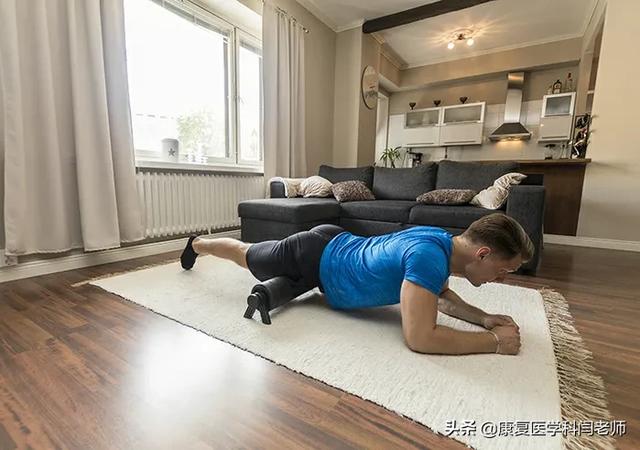
Nutritional deficiencies.
The issue of nutrition is also a cliché, if you don't understand it, you can go to the article I wrote about nutrition, it's very comprehensive, I'm not going to go into all the details here, there's too much to say.

Spasticity issues.
Spasticity is a big deal, so I won't go into it too much here.
Patient's mood.
The patient's mood can also have a huge impact on rehabilitation exercises.
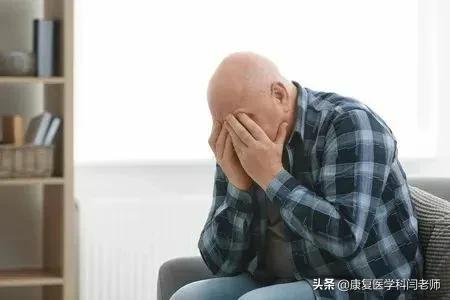
That's all I have to say to you today, I'm going to bed, can't stay up late. If you don't understand anything, you can follow me or leave a message in the comment section to communicate and discuss with each other.
I am Mr. Yan of the Department of Rehabilitation Medicine, follow me for more comprehensive and systematic rehabilitation knowledge!
Images are from the internet and have been deleted!
We look forward to your attention and support. We wish you a speedy recovery and a return to society and family!

I am the organizer of the hemiplegia rehabilitation exercise group in Tanghe County, Henan Province. Cerebral infarction for almost a year legs more and more weak problem also have many patients asked me. We have summarized a few points for reference only.
1:The lack of energy in the affected leg has a lot to do with mood. You can go back and remember the road of exercise for years, which day when the mood is good walking outside the easy, will feel very good. When you are in a bad mood, you will feel that your legs are heavy and weak, and you will feel annoyed when you see that nothing is going well.
It is important to note that is a good day mood, walking feel good when not to walk more, try to keep the number of steps per day, only in a long time to feel good feel less tired when you can then increase the intensity of exercise.
2:Rehabilitation exercise into the misunderstanding that a flavor of walking is in the exercise. In fact, the rehabilitation exercise is to start from practicing basic skills, only the basic skills practiced solid walking will feel relaxed.
3:When you don't have enough energy to replenish, you will feel weak and have no energy in your legs, so you need to replenish your energy with milk, calcium tablets, chicken, duck, fish and meat.
4:When you are overworked, your legs feel heavy and weak. If you are overworked after walking too much the first day, you will feel weak the next day. This is the time to rest. Rehabilitation is a combination of work and rest.
5:Hemiplegic patients in the rehabilitation exercise process is to be persistent, do not fish for three days and sunshine for two days. Every day should be like a day to do exercise.
Rehabilitation exercises will only make the affected side more and more strong, more and more flexible, and more and more hypotonic. It will not get worse. Don't worry, give yourself a scientific and reasonable exercise program and work hard! Concentrate on your rehabilitation program with all your heart and soul!
Best wishes for a speedy recovery!

Thanks for the invite.
Cerebral infarction, formerly known as cerebral infarction, also known as ischemic stroke is defined as ischemic necrosis or softening of limited brain tissue caused by blood supply obstruction, ischemia and hypoxia in the brain. So the patient's cerebral infarction for almost a year, walking more and more can not be by the following reasons:
First, from the disease itself: the focal point of cerebral infarction may cause damage to the function of movement, then the patient may have problems with mobility; another is the new onset of cerebral infarction, the patient has a new focal point, the cerebral blood vessels have a new blockage so this situation may also occur.
Second, from the patient: some patients do not follow the doctor's instructions for follow-up treatment, including medication, life care, may lead to the emergence of new conditions; in addition, the patient needs to carry out rehabilitation training, there may be patients in the rehabilitation want to return to their original state as soon as possible, there is more than the limit of the amount of exercise, exercise excess, may also appear in this situation.
Therefore, after suffering from this disease, patients still need to follow the doctor's instructions for follow-up treatment, as well as in the life of good care work, including not only the medication, rehabilitation, diet, mood, but also in accordance with the prescribed follow-up examination.
Almost a year after the brain infarction patient why the legs are getting softer and softer, and walking is becoming more and more impossible? If this happens, you can generally consider the following situations:
1, new-onset cerebral infarction, that is, there is a new blockage of the cerebral blood vessels, the emergence of new foci leading to the emergence of poor limb muscle strength again.
2, after the cerebral infarction, the weakness of the lower limbs, and the symptoms of weakness, because of the cerebral infarction parts lead to motor function damage caused by.
Weakness of the lower limbs is mostly related to the patient's general state, mood, and even weather changes. In general, if the patient's mood is poor or the weather is cloudy or rainy, the patient can experience poorer muscle strength of the lower limbs than before.
3, cerebral infarction patients in the rehabilitation process, want to recover as soon as possible, will strengthen the training, resulting in excessive fatigue, such as the left hemiplegia, excessive practice, the need for the right side of the support, resulting in the right side of the limb weakness.
It is recommended to go to the hospital to see a medical professional for diagnosis and clarification of the cause.
Cerebral infarction patients with limb paralysis, must be through active exercise, in order to recover, at least 80% of patients can recover walking function, if the problem of walking drag, also need to actively rehabilitation.
Generally, after 48 hours of acute phase of cerebral infarction, ultra-early rehabilitation of limbs can be carried out, which is mainly given to the placement of good limb position, and also can promote the recovery of limb function through acupuncture. After the acute stage, cerebral infarction has a golden recovery period of 3-6 months, through the systematic rehabilitation exercise, the patient's lower limb function will have a great progress, and some of them may not leave sequelae.
It is recommended that patients should preferably go to the rehabilitation department of the hospital for systematic rehabilitation exercises. If they do the rehabilitation exercises on their own, they will be prone to poor walking posture due to improper posture.
Learn more about health and follow Dr. Xiao Xiao.
For patients with cerebral infarction, a decline in limb function is very normal, which suggests a rapid deterioration of the condition and the need for a timely response.
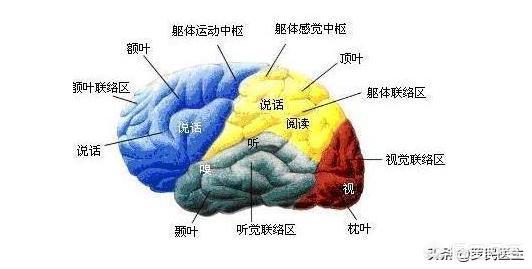
What happens inside the body of a person with a brain attack?
Cerebral infarction is a type of stroke, to put it bluntly, it is a cerebrovascular accident, the human brain is like a commanding officer, all kinds of commands need to be issued by it, which consists of a lot of members, all of them are in their respective roles, subdivided into all kinds of things, such as movement, emotion, language and so on.
But these "members" also need to eat to keep working, and blood vessels act as the role of the deliveryman, it conveys nutrition (blood oxygen) to the brain region "members", but if the corresponding blood vessels have an accident, can not be timely and adequate supply of blood oxygen and energy to the regions However, if something happens to the corresponding blood vessels and they are unable to supply sufficient oxygen and blood energy to the various areas of the tissues, the lack of oxygen and blood energy in any part of the body will cause the function of its supervisor to decline, thus affecting normal life.
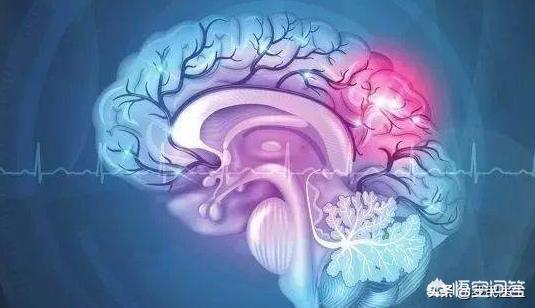
What is the cause of the gradual decline in mobility and the legs are getting weaker?
And patients with cerebral infarction with symptoms of leg weakness may be the central region of the tissue to a certain degree of necrosis, and this is when we must raise attention, because this situation is a dynamic change, meaning that if it is not treated, it will only get worse and worse, and will not recover naturally.
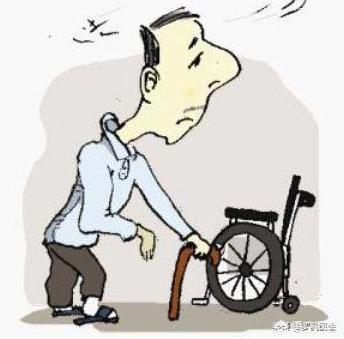
What are the top priorities?
Restores normal blood flow to the brain, allowing ischemically damaged brain region tissues to regain adequate blood perfusion.
On the one hand, we need to address the underlying lesion that caused the cerebral infarction to prevent secondary compression and irritation of the nerves and to avoid sustained constriction of vasospasm.
On the other hand, it is necessary to rationally regulate the nerves, release nerve excitability, activate the damaged and necrotic nerve cells, and restore the various functions that have been lost.
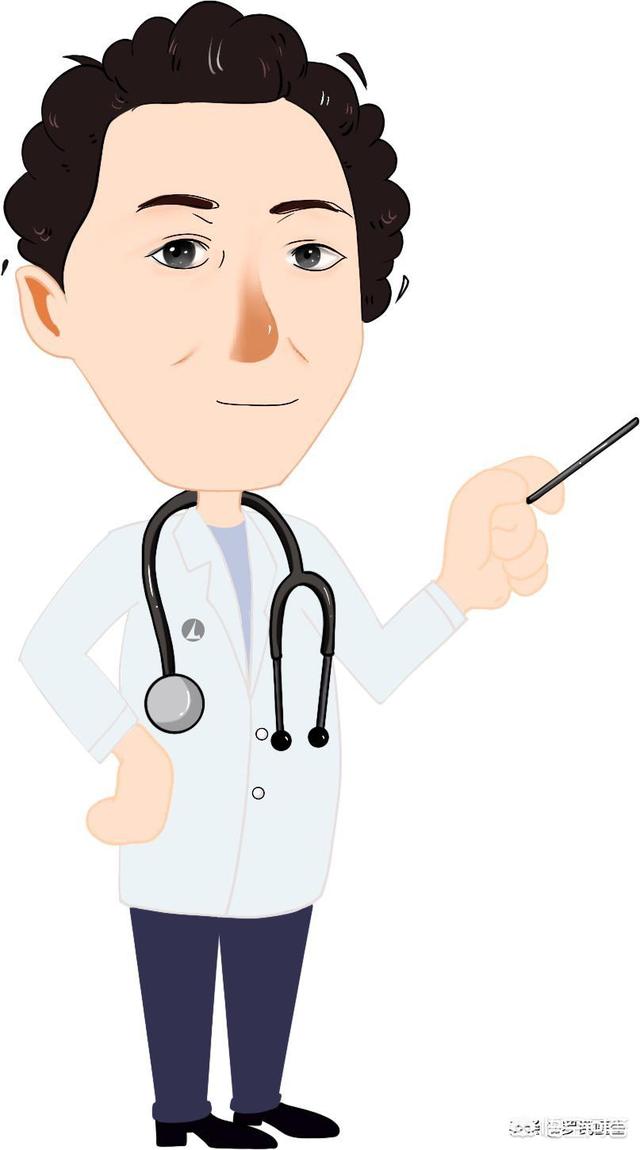
I hope my answer helps you!
If there's anything you don't understand, comment and private message me!
Thanks for the invite! I have a new suggestion that I hope you'll take on board.
It is to use, three mineral water bottles, filled with hot water, water temperature to
A little hot for appropriate, and then hot compresses cervical spine and the entire spine, the principle is that, through the hot compresses after the forced blood circulation, through the hot compresses, the entire spine, you can promote the blood circulation of the five viscera and six bowels, only the blood circulation is fast, the blood can run to the lower limbs, the legs will have strength to walk.
Take it once a day in the morning and once in the evening for at least 30 minutes.
Finally, I hope that elderly friends, are able to use mineral water bottles, often so hot compresses throughout the spine, thus playing a role in health care!
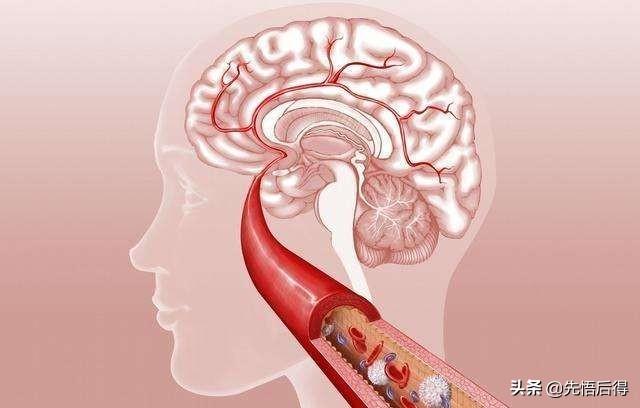
There is this phenomenon, my cousin is. He has been suffering from a cerebral infarction for 2 years and says he has no energy. Although slow walking is not visible is to say that the affected leg like no tendon. I advised him to walk a little bit more rocky road to see, the results of a month later said that the effect is much better than before, said to insist on half a year to see. The day before yesterday, I had to buy me a drink, I had no choice but to eat together, or I bought the bill. I said that day you completely well then treat me well. However, people with this situation try this approach to see, but also do not have to spend money, I think more than those who massage this approach to make more energy. I wish you all get well soon, cheers.
The patient presents with weakness in walking, which should be related to cerebral infarction.
In the early stage of cerebral infarction, the function of the patient's brain cells still exists, so its clinical symptoms are not too obvious, and when the brain cells are gradually necrotic, the patient's paralytic symptoms will be obvious, so the patient will appear to walk with difficulty, or even paralyzed performance.
Of course, we should also pay attention to patients with cerebral infarction and secondary formation of cerebral atrophy, so the patient appeared to walk hard phenomenon, of course, this is just a guess, or should be carried out brain imaging to determine whether the patient is the existence of disease factors, resulting in the phenomenon of the patient walking more and more hard, it is recommended that the entity hospital Neurology Department for consultation, a clear diagnosis.
LifeWay Public Health believes that at this point in time, according to the progress of the disease, you should not feel that your legs are becoming less and less flexible. This manifestation may be related to the cerebral infarction and have a small seizure, or the rehabilitation method is not right, or some other diseases are more related.
General cerebral infarction patients after the disease, after rehabilitation and natural healing, generally will step by step improvement, no improvement, may be the part of the cerebral infarction affects the limbs, and there is no effective post-rehabilitation treatment, generally want to carry out neurological rehabilitation, as well as traditional Chinese medicine, acupuncture and massage, blood circulation and blood stasis of traditional Chinese medicine treatment.
It is recommended to go to the hospital to take a brain CT, do a blood biochemistry, etc., to see if there is a relapse, no relapse, you can carry out rehabilitation exercises, as well as use some nutritive nerve medication.
This question and answer are from the site users, does not represent the position of the site, such as infringement, please contact the administrator to delete.